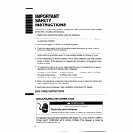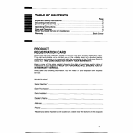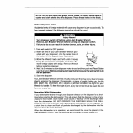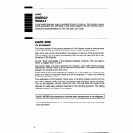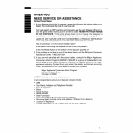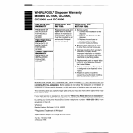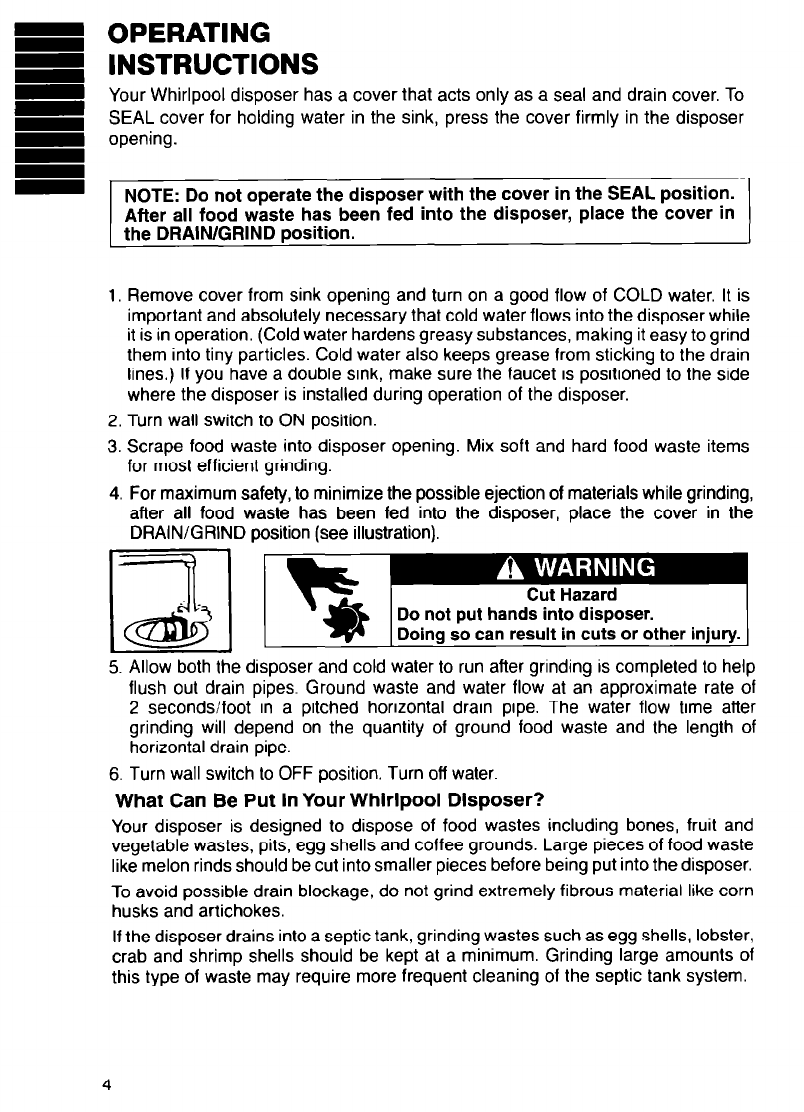
OPERATING
INSTRUCTIONS
Your Whirlpool disposer has a cover that acts only as a seal and drain cover. To
SEAL cover for holding water in the sink, press the cover firmly in the disposer
opening.
NOTE: Do not operate the disposer with the cover in the SEAL position.
After all food waste has been fed into the disposer, place the cover in
the DRAIN/GRIND position.
1. Remove cover from sink opening and turn on a good flow of COLD water. It is
important and absolutely necessary that cold water flows into the disposer while
it is in operation. (Cold water hardens greasy substances, making it easy to grind
them into tiny particles. Cold water also keeps grease from sticking to the drain
lines.) If you have a double sink, make sure the faucet is positioned to the side
where the disposer is installed during operation of the disposer.
2. Turn wall switch to ON position.
3. Scrape food waste into disposer opening. Mix soft and hard food waste items
for most efficient grinding.
4. For maximum safety, to minimize the possible ejection of materials while grinding,
after all food waste has been fed into the disposer, place the cover in the
DRAIN/GRIND position (see illustration).
Do not put hands into disposer.
Doing so can result in cuts or other injury.
5. Allow both the disposer and cold water to run after grinding is completed to help
flush out drain pipes. Ground waste and water flow at an approximate rate of
2 seconds/foot in a pitched horizontal drain pipe. The water flow time after
grinding will depend on the quantity of ground food waste and the length of
horizontal drain pipe.
6. Turn wall switch to OFF position. Turn off water.
What Can Be Put In Your Whirlpool Disposer?
Your disposer is designed to dispose of food wastes including bones, fruit and
vegetable wastes, pits, egg shells and coffee grounds. Large pieces of food waste
like melon rinds should be cut into smaller pieces before being put into the disposer.
To avoid possible drain blockage, do not grind extremely fibrous material like corn
husks and artichokes.
If the disposer drains into a septic tank, grinding wastes such as egg shells, lobster,
crab and shrimp shells should be kept at a minimum. Grinding large amounts of
this type of waste may require more frequent cleaning of the septic tank system.
4




